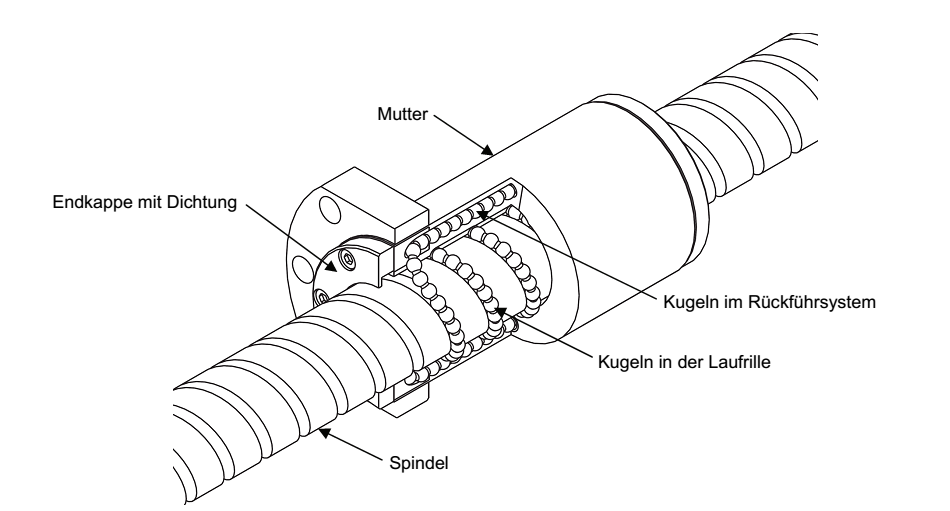A frequent cause for unplanned down time of injection molding machines is a defect on the spindle of the ball screw, which is responsible for the horizontal movement of the spiral. To reduce the associated economic damage it is necessary to monitor the wear of the spindle. This allows for timely planning and execution of maintenance procedures. – The method developed by LCM estimates the remaining lifetime of the spindle based upon a number of measurement values.
Detecting Wear for Spindles and Ball Screws Drives of an Injection Molding Machine
Injection molding machines (IMM) are operated in many industrial sectors, all of them requiring a high degree of availability and reliability. As with every mechanical system, the components of an IMM are subject to wear. Especially the spindle of the ball screw drive (which moves the spiral, see Fig. 1) is subject to heavy wearing. To ease maintenance and enhance downtime planning a system is to be available which detects the state of the spindle by means of simple measurable parameters and estimates the remaining lifetime.
Many of the previously investigated and published solutions fail to be feasible in everyday use, as high-precision measuring systems are required, or difficult-to-access quantities have to be measured and evaluated. Also attempts to physically model a ball screw drive and thus to monitor the state of the spindle were rejected because of its complexity.
The aim of this COMET K2 project was the development of an algorithm which makes it possible to deduce the state of the spindle from the easily accessible measurement data of the ball screw drive. This algorithm is intended to have high accuracy and robustness against mismeasurement. In addition, the requirements for computing and memory performance should not be too great. In close cooperation with the company ENGEL Austria, measurement data with spindles from different manufacturers were recorded on an IMM test stand for the development of the algorithm. In the course of the measurements these spindles have worn out more and more, so that a correlation of the measurement data with the deterioration was possible. It turned out that a good estimation of the wear can be achieved by extracting specific features from the measurement data.
The basic idea of this method is used in many applications in which the state or the class of a specific object is to be determined. The key is to extract and then select the features that correlate best with the target size sought. In the case of the ball screw drive, features are extracted from vibration data, from temperature measurements and from the injection performance. The time of the next maintenance stop is formed using a model for estimating the remaining lifetime. It is sufficient to carry out an evaluation of the machine characteristics every 20 minutes. For this reason, the required demand for computing power and storage space is manageable.
The advantage of this innovative algorithm, which is currently being patented, is that the time of the next maintenance of the spindle can be planned on the basis of process data that has already been measured. This means that there are no unforeseen production stops, and the IMM can be operated more economically and efficiently.
Currently, a prototype of ENGEL Austria’s algorithm is implemented in certain types of IMMs. As a result, field tests are carried out during ongoing operation with selected customers. After evaluating these tests, in cooperation with ENGEL Austria, a decision is made about the serial use of the algorithm.
Effects
The method developed by LCM allows a permanent monitoring of the spindle in the ball screw drive of an injection molding machine. This reduces the possibility of unforeseen failures of the machine. Maintenance work on the ball screw drive can be planned in advance, leading to a more efficient and more economical production.









